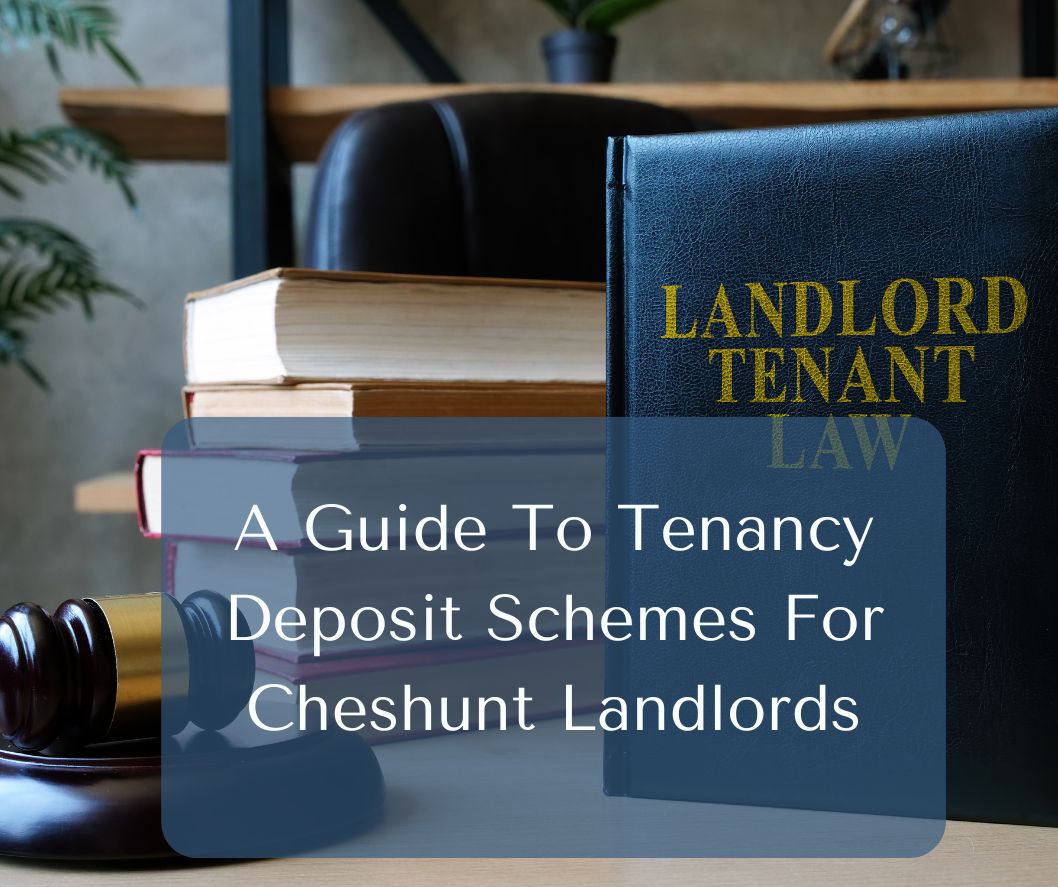A Guide To Tenancy Deposit Schemes For Cheshunt Landlords

If you’re thinking of renting out a property in Cheshunt or surrounding areas, or investing in buy-to-let you need to understand the many and varied legal aspects of being a landlord.
One of these is what your legal responsibility is for the money you receive from your tenant as a rental deposit. The law says that if you take a deposit from your tenant, you must protect it in a government-approved landlord deposit protection scheme.
Using a tenancy deposits scheme has benefits for you as a Landlord and your tenant. It means the deposit is safe and sound but also that you both have access to an independent dispute resolution service, should you need it.
There are two different types of scheme to choose from and three authorised providers. There are also legal limits on how much money you can ask your tenant to give you as a deposit.
We’ve put together some frequently asked questions on the issue; to help you understand how tenancy deposit schemes work and what you need to do when you find a tenant for your property.
What Is A Tenancy Deposit Scheme (TDS)?
Since April 2007 the law has required landlords in England and Wales to safeguard their tenants’ deposits in one of three government-approved TDS schemes.
The schemes which landlords can join in England are:
The Deposit Protection Scheme Service
MyDeposits
The Tenancy Deposit Scheme
Landlords are free to decide which one they choose, but you must give details to your tenant within 30 days of receiving their deposit and serve to them the prescribed information.
Insurance V Custodial Schemes
There are also two different types of TDS – custodial and insurance. All three government-approved tenancy deposit schemes offer both options.
Custodial Deposit Schemes
Custodial schemes protect the whole deposit during the period of the tenancy. The landlord needs to pay the deposit into the scheme. At the end of the tenancy, the deposit – or an agreed amount minus costs for any damage – is returned to the tenant by cheque or bank transfer. The scheme has its own independent arbitration service.
Custodial schemes are free of charge for landlords to use.
Insurance Deposit Schemes
With an Insurance-backed TDS, the landlord holds onto the deposit, but pays a fee to the scheme to insure the payment. The landlord should not use the money for any other purpose during the period of the assured shorthold tenancy. At the end of the tenancy, if the landlord and tenant agree on any deductions, the landlord will return the deposit to the tenant.
As with the custodial scheme, any disputes will go to the scheme’s adjudicator. The insurance element of the scheme means that if the landlord fails to return the deposit, the scheme will pay the tenant and claim the money owed from the landlord.
What Is The Law Around Landlord Deposit Schemes?
As a landlord, you don’t have to ask your tenant for a deposit. However, doing so is a good idea as it offers you some protection against damage to your property by your tenant or failure to pay rent.
Following the introduction of the Tenant Fees Act, which became law in 2019, there are limits on how much you can ask your tenant to pay as a deposit. In most cases, tenant deposits are limited to the equivalent of five weeks’ rent.
What A Landlord Must Do With A Tenant’s Deposit
When you receive the deposit from your tenant you must put it in the government-backed tenancy deposit scheme you have chosen to use within 30 days and serve the prescribed information to the Tenant. This will inform your tenant about the scheme you are using and its independent adjudication service.
What Are The Schemes’ Benefits For Landlords?
For landlords, the main benefit of a TDS is the alternative dispute resolution service. This free and independent arbitration is beneficial if landlords and tenants disagree about deductions for damage.
Should a dispute arise, you will need to provide evidence to the adjudicator to back up your claim. It is therefore vital that you are thorough in preparing your inventory at the start of the tenancy, taking photos and videos of the condition of the property and all fittings and fixtures.
Both the landlord and tenant must agree with the adjudicator’s decision. If you don’t, the matter will need to be decided by the courts.
Are There Any Tenancy Deposit Scheme Penalties?
As a landlord the law says you must:
protect your tenant’s deposit in a government-backed scheme
give your tenants the required prescribed information about the scheme within 30 days of the deposit being received.
If you don’t, the court may order you to repay the deposit and pay compensation to your tenant of up to three times the value of the deposit. You may also find it more difficult to evict your tenant, using a Section 21 notice, should you have reason to do so.
What Are The Tenant Benefits?
Using a tenancy deposit scheme gives your tenant the reassurance that their deposit will be protected properly. The dispute resolution service also gives them the peace of mind that any disagreements about damage to the property will be settled fairly and independently.
What Are The Costs To A Landlord?
Custodial schemes are free to join. Insurance schemes have a joining fee – these start at arround £20. The amount you pay depends on the size of the deposit being protected and whether you are a member of the National Landlords Association (NLA).
What Can A Landlord Deduct From The Security Deposit?
There are various costs to landlords, which can be deducted from a deposit at the end of the tenancy. You can only make these deductions with the agreement of the tenant, an independent adjudicator or the courts. Landlords are not allowed to withhold money without having clear and legal reasons for doing so.
Reasons why you might withhold part of a deposit at the end of a tenancy:
- to cover any unpaid rent or bills
- for any missing items that were listed on the inventory
- for damage to the property and its contents, either deliberately or as a result of negligence
- for failure to carry out any duties set out in the tenancy agreement, such as garden maintenance
- for failure to keep the property in a hygienic condition
- to cover the cost of removing unwanted belongings left in the property after keys have been returned.
If you require any further information or advice about Letting a Property In Cheshunt contact us on 01992 637777 or visit our website on www.woodhouseproperty.co.uk
Author: A Guide To Tenancy Deposit Schemes For Cheshunt Landlords

